Certification Guide for CCNA Wireless 640-722: Strategizing Wireless AP Coverage
CCNA Wireless 640-722 Official Cert Guide
CCNA Wireless 640-722 Official Cert Guide
CCNA Wireless 640-722 Official Cert Guide from Cisco Press enables you to succeed on the Implementing Cisco Unified Wireless Networking Essentials (IUWNE) exam the first time and is the only self-study resource approved by Cisco. Best-selling author and expert instructor David Hucaby shares preparation hints and test-taking tips, helping you identify areas of weakness and improve both your conceptual knowledge and hands-on skills.
This complete study package includes
n A test-preparation routine proven to help you pass the exams
n Do I Know This Already? quizzes, which enable you to decide how much time you need to spend on each section
n Chapter-ending exercises, which help you drill on key concepts you must know thoroughly
n The powerful Pearson IT Certification Practice Test software, complete with hundreds of well reviewed, exam-realistic questions, customization options, and detailed performance reports
n A final preparation chapter, which guides you through tools and resources to help you craft your review and test-taking strategies
n Study plan suggestions and templates to help you organize and optimize your study time
Well regarded for its level of detail, study plans, assessment features, challenging review questions, and hands-on exercises, this official study guide helps you master the concepts and techniques you need to ensure exam success.
David Hucaby, CCIE® No. 4594, is a network architect for the University of Kentucky, where he works with academic and healthcare networks based on the Cisco Unified Wireless Network products. David holds bachelor’s and master’s degrees in electrical engineering from the University of Kentucky. His Cisco Press titles include CCNP SWITCH Exam Certification Guide; Cisco LAN Switching Video Mentor; CCNP Security FIREWALL Exam Certification Guide; Cisco ASA, PIX, and FWSM Firewall Handbook, Second Edition; and Cisco Firewall Video Mentor.
The official study guide helps you master all the topics on the CCNA Wireless 640-722 exam, including the following:
n RF signals, modulation, and standards
n Antennas
n WLAN topologies, configuration, and troubleshooting
n Wireless APs
n CUWN architecture
n Controller configuration, discovery, and maintenance
n Roaming
n Client configuration
n RRM
n Wireless security
n Guest networks
n WCS network management
n Interference
Companion CD
The CD contains 170 unique practice exam questions for the CCNA Wireless 640-722 exam in two highly realistic, interactive practice exams. Includes Exclusive Offer for 70% Off Premium Edition eBook and Practice Test
Chapters 1 through 6 covered wireless communication with a focus on a single access point (AP) exchanging data with one or more clients.
A single AP may be sufficient for home or small office use, but most wireless LANs involve a greater geographic area and require more APs.
This chapter explains how wireless coverage can be adjusted to meet a need and how it can be grown to scale over a greater area and a greater number of clients.
As you work through this chapter, remember that two things are important: the size of the BSA or AP cell and the location of cells in relation to each other.
“Do I Know This Already?” Quiz
The “Do I Know This Already?” quiz allows you to assess whether you should read this entire chapter thoroughly or jump to the “Exam Preparation Tasks” section.
If you are in doubt about your answers to these questions or your own assessment of your knowledge of the topics, read the entire chapter.
Table 7-1 lists the major headings in this chapter and their corresponding “Do I Know This Already?” quiz questions.
You can find the answers in Appendix A, “Answers to the ‘Do I Know This Already?’ Quizzes.”
Table 7-1 “Do I Know This Already?” Section-to-Question Mapping
Foundation Topics Section | Questions |
AP Cell Size | 1–4 |
Adding APs to an ESS | 5–10 |
Which of the following parameters can be adjusted on an AP to change the size of its cell or BSA? (Choose all that apply.)
- Channel number within a band
- Transmit power
- Supported modulation and coding schemes
- Supported data rates
An AP has been configured to use channel 1 with a transmit power of 20 dBm. With the AP located in the center of the lobby, you have determined that its signal will reach all locations in the lobby area. However, some users with small battery-operated devices report connectivity problems when they move toward the outer walls of the lobby. Which one of the following approaches will probably fix the problem?
- Increase the AP’s transmit power to increase its range
- Increase the client device’s transmit power
- Adjust the client device’s roaming algorithm
- Enable some lower data rates on the AP
Suppose that an AP is configured to offer the following data rates: 2-, 5.5-, 6-, 9-, 11-, 12-, 18-, 24-, 36-, and 48-Mbps data rates to its clients. Which one of the following strategies should be used to reduce the AP’s cell size?
- Enable the 1-Mbps data rate
- Enable the 54-Mbps data rate
- Disable the 36- and 48-Mbps data rates
- Disable the 2-Mbps data rate
All the APs on the second floor of a building are part of a single ESS. Each AP has been configured with a transmit power level of 14 dBm. In addition, each AP has been configured to use a non-overlapping channel that is different from its adjacent neighbors. All APs have been configured to offer only the 24-, 36-, 48-, and 54-Mbps data rates; all other rates are disabled. One day, one of the APs fails and someone replaces it. Afterward, users begin to call and complain about poor performance and roaming. You discover that the problems are not occurring in the area covered by the failed AP; instead, they are occurring about two APs away from it. Which one of the following could be causing the problem?
- The replacement AP has its radios disabled.
- The replacement AP is using a transmit level of 1 dBm.
- The replacement AP is using the 1- and 2-Mbps data rates.
- The replacement AP is new and cannot be causing the problem.
Which one of the following determines when a wireless client will roam from one AP to another?
- The current AP detects a weak signal coming from the client and forces the client to roam.
- The next AP overhears the client’s signal and asks it to roam.
- The client’s roaming algorithm reaches a threshold in signal quality.
- The client loses its IP address.
Which one of the following 802.11 frames is used to trigger a roam from one AP to another?
- Association request
- Disassociation request
- Probe
- Reassociation request
Which one of the following statements is true about roaming?
- All wireless clients use the same algorithms to trigger a roaming condition.
- Wireless clients can scan available channels to look for a new AP when roaming.
- Wireless clients must roam from one AP to another on the same channel.
- The 802.11 standard defines a set of roaming algorithms for clients.
Which one of the following statements is true about a good wireless LAN design?
- Neighboring APs should use the same channel to promote good roaming.
- APs should be positioned so that their cells overlap.
- APs should be positioned so that their cells do not overlap at all.
- APs should use channels that overlap each other.
When you are designing the AP channel layout for an area, which one of the following is the most important consideration?
- The number of channels is conserved.
- APs in different areas use different channels.
- Adjacent APs use non-overlapping channels.
- Clients are grouped into common channels.
An AP is located in the main office on the third floor of a building. The AP is configured to use channel 6 in the 2.4-GHz band. Which of the following conditions might hinder clients as they move around on the third floor and need to roam? (Choose all that apply.)
- Two other APs in the third floor main office area use channel 6.
- None of the fourth floor APs directly above the main office use channel 6.
- One of the second floor APs directly below the main office use channel 6.
- All of these answers are correct.
AP Cell Size
The basic service area (BSA) or cell that is provided by an AP can vary, depending on several factors. Obviously, the cell size determines the geographic area where wireless service will be offered.
AP cell size can also affect the performance of the APs as clients move around or gather in one place.
Remember that a wireless LAN is a shared medium. Within a single AP cell, all of the clients associated with that AP must share the bandwidth and contend for access.
If the cell is large, a large number of clients could potentially gather and use that AP. If the cell size is reduced, the number of simultaneous clients can also be reduced.
The signal from an AP does not simply stop at the boundary of its cell. Instead, the signal continues to expand ad infinitum, growing exponentially weaker. Devices inside the cell boundary can communicate with the AP.
Devices outside the boundary cannot because the signal strength of either the client or the AP is too weak for the pair to find any usable modulation that can be used to exchange information.
can control the size of a cell by changing the parameters that are described in the following sections.
Tuning Cell Size with Transmit Power
To use a wireless LAN, devices must be located within the range of an AP’s signal and have an active association with the AP.
This area is known as the BSA or cell. Consider the scenario shown in Figure 7-1. PCs 1 through 4 are within the cell’s perimeter and are associated with the AP.
PC-5, however, is outside the cell and cannot form an association or participate in the basic service set (BSS).
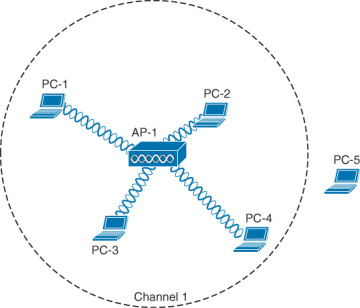
Figure 7-1 An Example Cell That Includes All but One Client.
If the area outside a cell is a legitimate location where wireless devices might be present, the coverage area should probably be extended there. How can that be accomplished?
The most straightforward approach is to increase the transmit power or signal strength leaving the AP’s antenna.
A greater signal strength will overcome some of the free space path loss so that the usable signal reaches farther away from the AP.
Figure 7-2 shows the effect of changing the AP’s transmit power level. The original cell from Figure 7-1 is shown as the second concentric circle, where the transmit power level was set to 17 dBm.
If the level is increased to 20 dBm, the cell grows into the area shown by the outermost circle. Notice that PC-5 now falls within the cell boundary.
If the transmit power level is decreased to 10 dBm, the cell shrinks and includes only clients PC-2 and PC-3. Why would you ever want to decrease a cell’s size? That question will be answered later in this section.

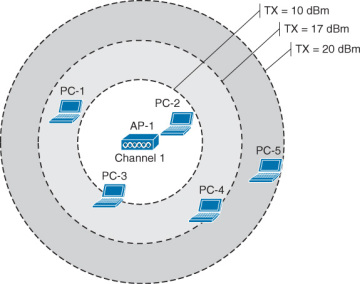
Figure 7-2 The Effects of the Transmit Power Level on Cell Size.
How should you decide on a transmit power level value? Cisco APs offer eight different values for their 2.4-GHz radios and seven values for their 5-GHz radios.
Most 802.11 scenarios fall within government regulations which limit the effective isotropic radiated power (EIRP) to a maximum transmit power level of 20 dBm (100 mW).
You could just configure an AP to run wide open at maximum power, but that is not always appropriate or beneficial.
One thing to consider is the two-way nature of wireless communications. By increasing the AP’s transmit power, the AP might reach a distant client, but can the client’s own signal reach the AP?
Notice client PC-5 in Figure 7-3. If the AP transmit power level is increased to 20 dBm (the outermost circle), PC-5 is included in the cell. However, PC-5’s wireless transmitter has a lesser power level; in its current location, PC-5 has a coverage area that falls short of including the AP.
This scenario is known as the asymmetric power problem, where the two communicating devices have differing transmit power levels that might not reach each other.
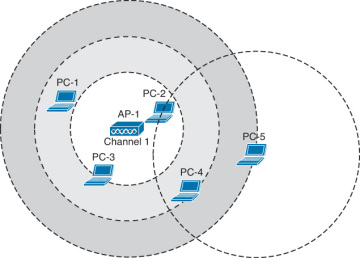
Figure 7-3 The Asymmetric Power Problem.
Tuning Cell Size with Data Rates
Setting the transmit power level is a simplistic approach to defining the cell size, but that is not the only variable involved.
The cell size of an AP is actually a compromise between its transmit power and the data rates that it offers.
Recall from Chapters 1 and 3 that the higher data rates or more complex modulation and coding schemes (MCS) offer the greatest throughput but require the best signal conditions—usually closer to the AP.
The less complex schemes can work further away from an AP, but offer slower data rates. Therefore, at the perimeter of a cell, a client is likely to be using the least complex MCS and the lowest data rate.
Figure 7-4 shows a simplified representation of the range of each data rate with concentric circles. At the outer edge of the cell, a client will probably resort to a 1-Mbps data rate.

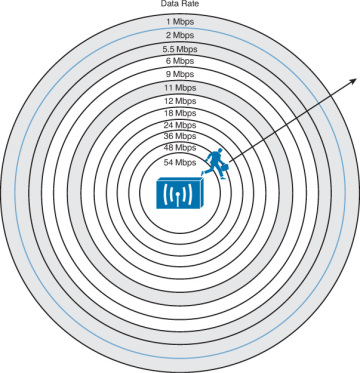
Figure 7-4 The Relationship of Data Rates and Cell Range.
To design a wireless LAN for best performance, you would most likely need to disable some of the lower data rates.
For example, you could disable the 1-, 2-, and 5.5-Mbps rates to force clients to use higher rates and better modulation and coding schemes.
That would improve throughput for individual clients and would also benefit the BSS as a whole by eliminating the slower rates that use more time on a channel.
As you disable lower data rates, the respective concentric circles in Figure 7-4 become irrelevant. This effectively reduces the usable size of the AP’s cell, even though the radio frequency (RF) footprint remains the same.
After all, you haven’t reduced the transmit power level which would reduce the extent of the RF energy.
Be aware that as smaller usable cells are placed closer together, their available data rates are higher. At the same time, their RF footprints can remain large and overlap each other, resulting in a higher noise floor.
To provide robust wireless coverage to an ever-increasing area, you should use the following two-pronged approach:
- Tune the cell size based on data rates and performance.
- Add additional APs to build an ESS that covers more area.
Adding APs requires careful consideration for client mobility and the use of wireless channels. These topics are covered in the next section.
Adding APs to an ESS
If a client is associated with an AP, it can maintain the association as long as it stays within range of the AP.
Consider the cell shown in Figure 7-5. As long as the client stays within points A and B, three conditions are met:
- The client is able to receive the AP’s signal at an acceptable level.
- The AP is able to receive the client’s signal.
One of the acceptable modulations can be successfully used between the client and the AP.
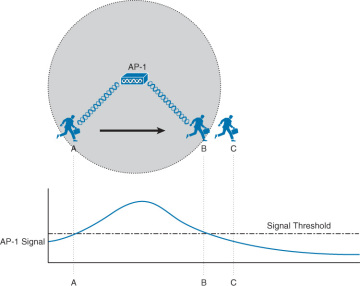
Figure 7-5 A Mobile Client Moves Within an AP Cell.
As soon as the client goes outside the cell range at point C, one or more of the conditions fails and the client loses the association. In the figure, the AP’s signal has fallen below an acceptable threshold.
Other APs can be added so that the client can move within a larger area; however, the APs must be carefully deployed to allow the client to roam from AP to AP.
Roaming is the process of moving an association from one AP to the next, so that the wireless connection is maintained as the client moves.
In Figure 7-6, a new AP has been added alongside AP-1, each using the same channel. It might seem intuitive to build a larger coverage area by using a single channel.
Usually this turns out to be a bad idea because the client may experience an excessive amount of frame collisions in the area between the two cells.
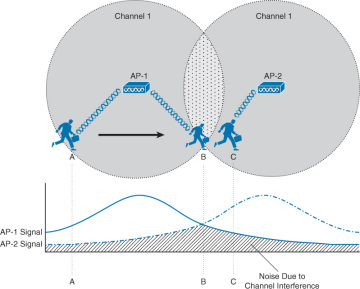
Figure 7-6 Pitfalls of Reusing Channels in Adjacent Aps.
Remember that the signal from an AP does not actually stop at the edge of the cell; rather, it continues to propagate as it eventually dies off. This is shown by the signal strength graph of each AP.
The client is able to form an association with AP-1 at point A. Even at that location, some portion of AP-2’s signal can be received, albeit at a lower level. Because AP-2 is using the same channel as AP-1, the two APs (and any clients within range) can essentially interfere with each other through co-channel interference.
Ideally, when the client in Figure 7-6 moves to location B, it should begin to anticipate the need to roam or transfer its association from AP-1 to AP-2. Notice that AP-1 and AP-2 are spaced appropriately for roaming, where their cells have some overlap.
The two APs are out of range of each other, so they are not aware of each other’s transmissions on the same channel. Each AP will coordinate the use of the channel with devices that are inside its own cell, but not with the other AP and devices in the other cell.
As a result, the client around location B will probably experience so many collisions that it may never be able to roam cleanly.
The Roaming Process
What enables a client to roam in the first place? First, adjacent APs should be configured to use different non-overlapping channels. For example, an AP using channel 1 must not be adjacent to other APs also using channel 1.
Instead, a neighboring AP should use channel 6 or higher to avoid any frequency overlap with channel 1.
This ensures that clients will be able to receive signals from a nearby AP without interference from other APs.
As you learned in Chapter 2, “RF Standards,” the 5-GHz band is much more flexible in this regard because it has many more non-overlapping channels available.
The roaming process is driven entirely by the wireless client driver—not by the AP. Wireless clients decide that it is time to roam based on a variety of conditions.
The 802.11 standard does not address this at all, so roaming algorithms are vendor specific. In addition, the roaming algorithms are usually “secret recipes,” so the exact thresholds and conditions are hidden from view.
Some of the ingredients in the roaming algorithm are the received signal strength indicator (RSSI), signal-to-noise ratio (SNR), a count of missed AP beacons, errors due to collisions or interference, and so on.
These are usually logical choices because they indicate an inferior connection.
Because different clients use different thresholds, some will try to roam earlier than others at a given location within a cell. Some clients will tend to “latch on” to an existing association until the AP can hardly be heard, whereas others will attempt to roam whenever a better AP is discovered.
Figure 7-7 depicts a clean roam between two APs that have been correctly configured with non-overlapping channels 1 and 6.
The two AP signal strengths are also shown as a graph corresponding to the client’s location.
At location A, the client has a clear signal from AP-1, so it maintains an association with that AP.

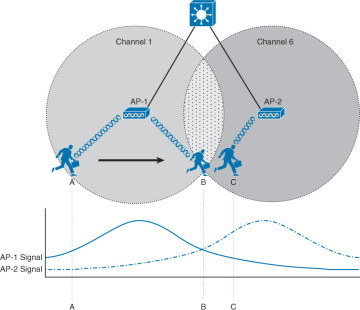
Figure 7-7 A Client Roaming Correctly Between Two APs.
As the client moves toward location B, it decides that AP-1’s signal is no longer optimal. Somewhere along the way, the client begins to gather more information about any neighboring AP cells.
The client can passively scan by tuning its radio to another channel and listening for beacons transmitted from other APs.
During the time that the radio is tuned away from the associated channel, the client might lose packets that have been sent to it. A client might use active scanning instead, where it sends probe requests to seek out a better AP where it can move its association.
The client does not know what channel is used on the next AP it encounters, so it must send the probes over every possible channel.
Again, the client must take time to tune its radio away from the current AP’s channel so it can scan other channels and send probes.
You might think of this as someone watching television. As the current program gets boring or nears its end, the viewer begins to “channel surf” and scans other channels for a better program.
One thing to keep in mind: While the viewer is scanning channels, he cannot keep watching the original program. Some of that program will be missed. This is also true of wireless clients.
While a radio is scanning other channels, packets arriving on the original channel will be dropped because they cannot be received. Therefore, there is a trade-off between staying available on a single channel and attempting to roam to other APs.
After the client is satisfied with all of the beacons or probe responses it receives, it evaluates them to see which AP offers the most potential for a new association. Returning to Figure 7-7, when the client nears location B, it receives a probe response from AP-2 on channel 6.
At location C, the client sends a reassociation frame to AP-2 and moves its association to that BSS.
How much should cells overlap each other to promote good roaming? Cisco recommends 15 percent to 20 percent overlap for most applications.
The idea is to give a client device some continued coverage even after the RSSI of its associated AP falls below a threshold and a roam might be triggered.
The client can probe and reassociate with the next AP before it completely loses contact with the previous AP.
Seamless roaming is especially important for time critical applications like voice traffic.
WLAN Channel Layout
The previous section laid the foundation for roaming by describing movement between two AP cells. Most scenarios require more than two APs to cover the appropriate area within a building.
Therefore, you need to consider the layout and configuration of more and more APs to scale the design to fit your wireless environment.
For example, to cover the entire area of a warehouse or one floor of a building, APs must be placed at regular intervals throughout that space. A site survey is a vital step toward deciding on AP placement, as actual live measurements are taken with an AP staged at various points in the actual space.
This method also takes any factors like free space loss and absorption into account, as the signal strength is measured within the actual environment where clients are located.
To minimize channel overlap and interference, APs cells should be designed so that adjacent APs use different channels.
For simplicity and a convenient design constraint, the examples in this section use the three non-overlapping 2.4-GHz channels.
The cells could be laid out in a regular, alternating pattern, as shown in Figure 7-8.
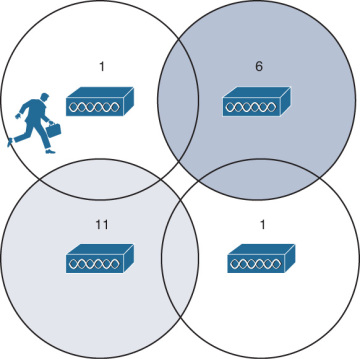
Figure 7-8 Holes in an Alternating Channel Pattern.
However, notice what is happening in the center where the cells meet; there is a small hole in RF coverage. If a client roams through that hole, his wireless signal could drop completely.
In addition, if the cells were brought closer together to close this hole, the two cells using channel 1 would overlap and begin interfering with each other.
Instead, you should lay the cells out in a “honeycomb” fashion, as shown in Figure 7-9. This pattern is seamless, leaving no holes in coverage.
In addition, notice how the two cells using channel 1 are well separated, providing isolation from interference.
As far as ordering channels in the pattern, there are several different variations using combinations of the three channels, but the result is basically the same.

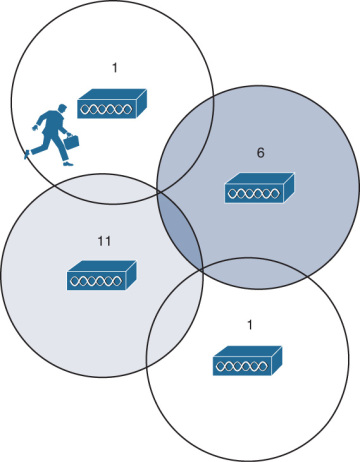
Figure 7-9 A Better Alternating Channel Pattern.
Notice that as the client shown in the channel 1 cell moves around, it will roam into adjacent cells on different channels.
For roaming to work properly, a client must be able to move from one channel into a completely different channel.
Alternating channels to avoid overlap is commonly called channel reuse. The basic pattern shown in Figure 7-9 can be repeated to expand over a larger area, as shown in Figure 7-10. Naturally, this ideal layout uses perfect circles that are positioned regularly across the building.
In practice, cells can take on different shapes and the AP locations may end up being irregularly spaced.
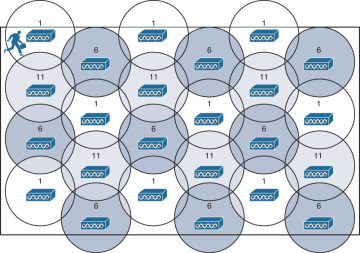
Figure 7-10 Channel Reuse Over a Large Area.
So far, only the channel layout of a two-dimensional area has been discussed. For example, Figure 7-10 might represent only one floor of a building.
What happens when you need to design a wireless LAN for multiple floors in the same building?
Recall that an RF signal propagating from an antenna actually takes on a three-dimensional shape. With an omnidirectional antenna, the pattern is somewhat like a donut shape with the antenna at the center. The signal extends outward, giving the cell a circular shape along the floor.
The signal also extends upward and downward to a lesser extent—affecting AP cells on adjacent floors as well.
Consider the building with three floors shown in Figure 7-11. The same two-dimensional channel layout from Figure 7-10 is being used on the first floor. The floors in the figure are shown greatly separated, so that you can see the channel patterns and numbers.
In reality, the cells on adjacent floors would touch or overlap, just as adjacent cells on the same floor do.
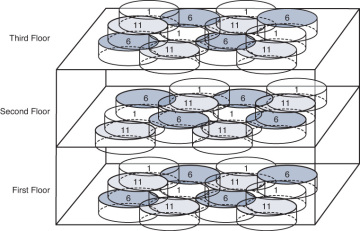
Figure 7-11 Channel Layout in Three Dimensions.
The pattern of alternating channels exists within the plane of a floor and between floors. Channel 1 on the first floor should not overlap with channel 1 directly above it on the second floor or below it in the basement.
When you consider each of the tasks involved in designing and maintaining a wireless LAN, it can really become a puzzle to solve.
The cell size, transmit power, and channel assignment all have to be coordinated for each and every AP. Roaming also becomes an issue on a large scale, if mobile clients can move throughout an entire campus wireless network.
The good news is that Chapter 13, “Understanding RRM,” explains how to solve many of these puzzles automatically.
Exam Preparation Tasks
As mentioned in the section, “How to Use This Book,” in the Introduction, you have a couple of choices for exam preparation: the exercises here, Chapter 22, “Final Review,” and the exam simulation questions on the CD-ROM.
Review All Key Topics
Review the most important topics in this chapter, noted with the Key Topic icon in the outer margin of the page. Table 7-2 lists a reference of these key topics and the page numbers on which each is found.

Table 7-2 Key Topics for Chapter 7
Key Topic Element | Description | Page Number |
Figure 7-2 | The effects of transmit power on cell size | 151 |
Figure 7-4 | The effects of data rate on cell size | 153 |
Figure 7-7 | Roaming between BSSs | 156 |
Figure 7-9 | Optimizing channel layout for roaming | 159 |
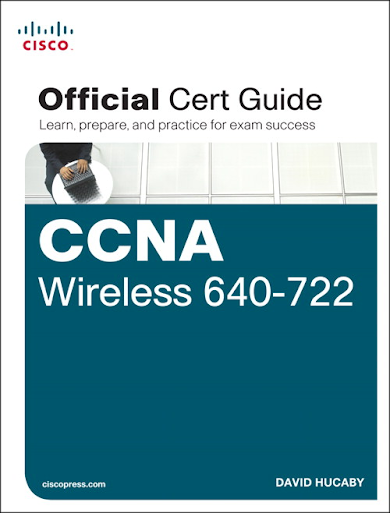
Comments
Post a Comment